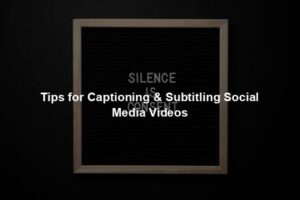
Translation is converting audio/text content from one language into another. The content might change from an audio format into a text format or a text format to a text format and lastly from audio to an audio format. Subtitling is the translation process that involves translating an audio format content into a text format content while Dubbing is translating one audio content into another audio content. The text to text translation is the common form of translation that many people know and are aware of.
With that said, it is also very important to know the two dominant types of translations we have out here. We have machine translators and human translators.
Machine translators – Normally referred to as MT, this is a sub-field of computational linguistics that investigates the use of software to translate text or speech from one language to another. They usually work by using computer software to translate a source language into a target language. There are different types of machine translators namely, Statistical machine translation, Rule-based translation, Hybrid translation, and Neural translation. We will look further into these types in another article.
Human translators – Normally referred to as HT, these are individuals who take up translation works which entail translation audio or text content from one language to another. They are the opposite of machine translators. This kind of translation relies purely on human intelligence and emotions to convert one way of saying things into another without changing the context of the original statement. It is the main form of translation that offers perfectly accurate translations. There are so many types of human translators that are divided across different fields. I will talk more about them in another article.
From the sound of it, people might conclude that text to text format translation is the easiest form of translation and that all you need to know is the source and target language. To some extent, it is true because all translators must have a solid understanding of the languages they are working with. A lot of clients prefer working with Native speakers because they at least understand how languages are affected by their cultural, linguistic, and technical aspects.
These three factors usually affect how a language is translated into another language. An example would be when a translator factors in the cultural aspect of the language they translate to, they avoid offending their target market by using words that mean a totally different thing when translated into another language and so on and so forth. You can only know this if you have a deep understanding of the languages you are working with as a translator.
Many people might think this is a natural flowing process but the truth of the matter is that it is not. Translators are usually faced with challenges from time to time. How a translator handles these challenges determines how good and professional they are. Translation is difficult, a lot of Common challenges in translation include knowing about a variety of features such as the language structure which differs between languages. For example, a simple English sentence has a subject, a verb, and an object, such as ‘She eats chicken.’ However, not all languages share this structure, so the Farsi language has the subject first, followed by a verb and then lastly the object. In Arabic, subject pronouns become a part of the verb. Because of these differences’ translators have to frequently add, rearrange, or remove words to communicate effectively in the targeted language.
Grammatical Challenges You Will Face As A Translator
Below we will look at some grammatical challenges translators go through.
1. The use of 2 Word Verbs
In the English language, the use of 2-word verbs is very common and acceptable. These words are commonly known as phrasal verbs, which are usually used to create emphasis in sentences. Now the reality of the matter is that this doesn’t apply to a lot of languages out there. When translators have to translate 2-word verbs which are also known as phrasal verbs from the English language into another language, it becomes hard because they then risk changing the context of a statement. Doing this requires a translator who understands how the grammar of their target language works to come up with perfect translations.
2. Expressions and Idioms
Idiomatic expressions are very common in the English language. These are expressions that are formed by the use of different grouped words which only make perfect sense when grouped. If you are a translator and translate idioms, word for word into another language then the meaning and context of how it was intended in the original content, will be distorted. Also, it is important to note that certain expressions are used differently in different cultures and be sure to factor that when doing translations. Imagine how hard it would be for a human translator to translate content that has a plethora of idioms and expressions and then further imagine how a machine translator would fair on when putting them head to head. A machine translator will be totally off and so it is not advisable to work with one on such an occasion. Anyone who is trying to localize a product by translating its characteristics into other languages needs to avoid the use of idioms as the message when translated may be distorted and even be offensive to other cultures.
3. Compound Words
Compound words are because of joining two words to create a new word. It is important to note that these words usually have a different meaning when presented individually and bring a new meaning when brought together. A good example of a compound word to illustrate that point is “cupboard”. The word cupboard is brought about by the two English words cup and board. A cup and a board mean two different things but when put together they bring on a new meaning. A translator who doesn’t understand this concept might end up translating those words individually which brings in a different meaning and context. Translators must always be ready to deal with such words head-on and that’s why being a Native speaker will come in handy in such a situation. When you are a Native speaker, you are aware of the common terms used in your language to mean a certain thing in another language. If these posses a challenge to a human translator, imagine how hard it would be a machine translator.
4. Words with Multiple Meanings
There are words that usually have different meanings and this depends on how they have been used in a statement or sentence. The English language is very vast and I would understand why this could be a challenge. Unlike other languages that may have words that mean a single thing, the English language has a plethora of words that usually have different meanings. Imagine being a translator and trying to translate a particular word from one language to another when you don’t really know which context the word has been used in. You can only be able to do translations for such words when you understand the context the words have been used in and then translate them into your target language. A good example of such a word is “Scale”. The word scale can mean a weighing scale and can also mean a fish scale. The only way to work around such a word is understanding the context in which it has been used and that is exactly why having a great understanding of both the source and target languages you are working with, is important.
5. Sarcasm is Difficult to Translate
When you translate sarcasm word-for-word then it loses its meaning completely. Sarcasm is not necessarily in the words being used but, in the emotion, and feeling the words used to evoke in someone. Sarcasm is a bitter, sharp, or cutting expression that typically means the complete opposite of any literal meaning. It becomes hard to translate a sarcastic comment made in one language into another language. This is because there is no one way in which a sarcastic statement might be received. It might be received as a sarcastic statement by one individual and a normal statement by another individual. Therefore, a sarcastic remark should not be lost in translation because it is very easy to misunderstand it. A publisher will try to eliminate sarcasm from a source text before it’s translated. This can’t always be done as the tone and style of the content may need to include the sarcasm to get the required message across. Therefore, translators usually opt to use expressions that bring out the same emotion or mood being set by a sarcastic statement in the source language into the target language. You should understand the intended emotion before translating it into the other language.
Linguistic Challenges You Will Face As A Translator
Everybody gets into this career, and sometimes they end giving up because, truth be told, it is not as easy as it is made out to be. You will come across translation jobs that need you to do a word-for-word translation, but you will also come across the ones that will need you to apply the cultural, linguistically, and technical aspects of your language pairs to come up with conclusive translations. All I’m saying is that you will meet challenges from time to time and you must be a translator ready to go above and beyond the challenges and come up with perfectly done translations. Below are some linguistic challenges that you should be ready to face ones you got into the translation world
1. Humor
With the world being a global village, everything is now widely available through the internet and people can interact with different content across the seas and still understand it and enjoy it. One thing that is not easily understandable across the board is humor. You might wonder why I say this, but the reality of the matter is that one language’s humor will not be received the same way in another language. Have you ever interacted with an individual from another country who speaks a totally different language and every time they tell a joke you just don’t seem to understand it? That is usually affected by the cultural, linguistic, and technical aspects of specific languages.
This is why translating humor from one language to another is an extreme challenge that translators have to face now and then. What usually happens when humor is being translated from one language to another, is that the meaning usually gets lost in translation. The translated version might end up being totally off context and off meaning. Something might be funny in the English language and offensive in the French language and as a translator, you should avoid offending your target audience. It takes a lot of skill and confidence to do great humor translations and only the very best translators will pull it off well.
2. Language structure
Language structure is another very important issue that has to be looked into by translators before they work on a project. You might wonder why, but it is because the structure of a language determines how sentences are created and whether they make sense or not. I will tell you this for free the essence of creating translations is so that people from other countries and who speak different languages may enjoy the content you are sharing and understand it. There is no reason to waste time translating an entire website into another language and risk the complete translation not making sense or being completely off context.
Different languages have different language structures and this is something that all translators should know. You must be a linguist translator to know exactly how language structure affects content being translated from a language with a particular structure to another with a totally different structure. You don’t want to have your content translated in another language and risk it not making sense or having words that are totally jumbled up. When you are moving from one original language to a different, or even not so different, target language, it’s difficult to not just translate the words. It’s always important to know not just the language, but also how and why things are worded in certain ways.
3. Missing words
If you are a linguist, you already know that there are words that would be available in one language and totally miss in another language. It doesn’t mean that the other language is not good or has a problem it just means that certain words are not translatable into their languages because they don’t exist. A linguist is a professional who immerses themselves in the scientific study of different languages. Not all words are translatable into other languages and as a translator, know this and avoid forcing words to take up certain spaces and risk the translations not making sense. Have you ever realized that there are words in the English language that you can’t possibly translate into your Native language? That time the words make perfect sense according to the English language but you just can’t figure out what these words would be in your Native language?
It is a very normal phenomenal for translation and translators can tell you for sure how hard this usually is. Imagine trying to translate a word that exists in the source language but doesn’t exist in the target language and remain in context and meaning. While most languages will have words and phrases for most things, there are always certain words and phrases that are just either different or missing entirely from target languages. Missing words don’t make translation difficult; it just makes it challenging for translators.
4. Multiple meanings
In the point above we have mentioned how challenging it is for translators to perfect translations for words that exist in a source language but don’t exist in a target language. Imagine the opposite where one word might have five different meanings and as a translator, you must know all these different meanings in order for you to come up with conclusive translations. This is something that is very common in most languages where you get certain words having multiple meanings. It is not a surprise per se, but it becomes a challenge for translators when they have to translate such words.
This doesn’t happen for all languages because others are straightforward. Languages like Japanese and English different in a large spectrum of linguistics, you will get a couple of such case scenarios. The only way for a translator to work around this challenge is for them to the kind to research on the different contexts in which certain words are used in different languages and how they might translate into other languages. Words in each of these languages (Japanese and English) can often have a double meaning. For example, in English, scales can either mean a part of a fish or a kitchen utensil, wherein Japan writing the kanji is not enough, because things can be written one way and said differently. Both are common issues in their languages, and each needs an expert at hand at all times to find effective and accurate workarounds.
5. Cultures
If you are taking up translation as a career, you should always be ready to study and extensive research on the cultural, linguistical, and technical aspects of the pair languages you are working with. This doesn’t just happen overnight, rather it is because of fully immersing yourself in the study and research of different languages, in order for you to understand them fully.
During translation, it is very easy to just do a word-for-word translation and ignore the cultural aspects of your target language. If they could, a lot of translators would because it would make translation easy and straight to the point. This is not possible though because ignoring the cultural aspect of a language might end up causing more damage than anything else. You might risk offending your target audience or even losing the original context of your content. The Arabic language is the most common because its cultural aspects differ totally from all other languages out there. Considering the fact that it is a language is because of two languages merging, it is important to be very keen when translating anything into it. The Arabic language cultural differences in spoken terms have leaked over repeatedly into regional variants of the written Arabic language, this means that anyone who is looking to translate it needs to make sure they are taking time to not only start translating but also working out who the original speaker was, where specifically they come from culturally, and then the same again for the speaker of the target language.
Translation is a really great career choice but you won’t miss these and many other challenges when you start on it. I won’t promise you a rosy ride but I can promise you a great career opportunity if you will go hard and make sure you are armed and ready to take on all the challenges you will definitely meet along the way. The only way to take on these challenges as a translator is to do a lot of research to ensure that you have knowledge of the language pairs you want to work with. It will not be easy but it is worth it.





